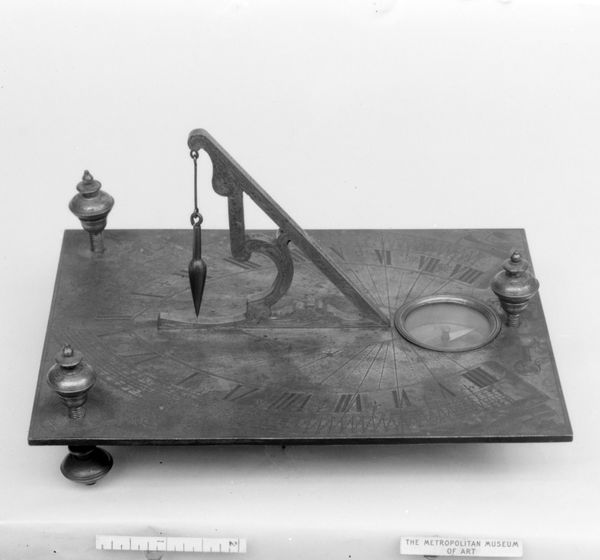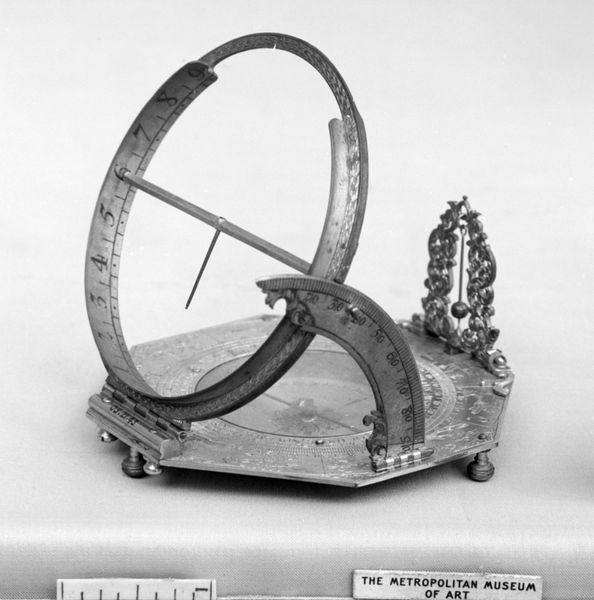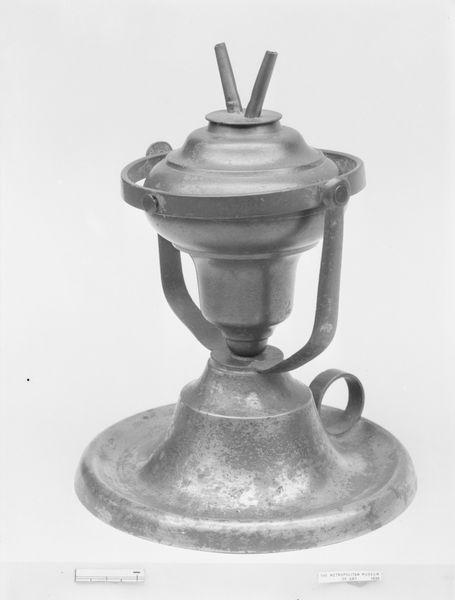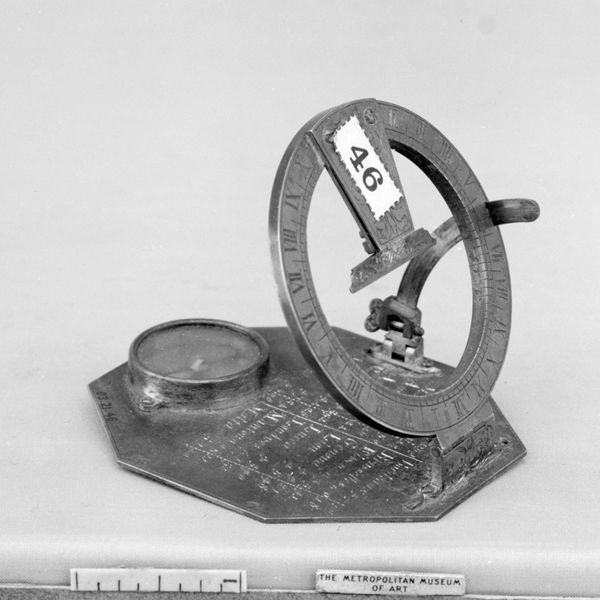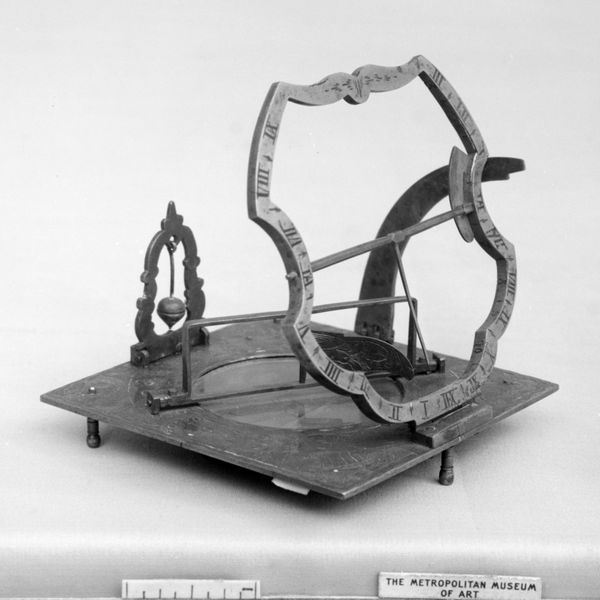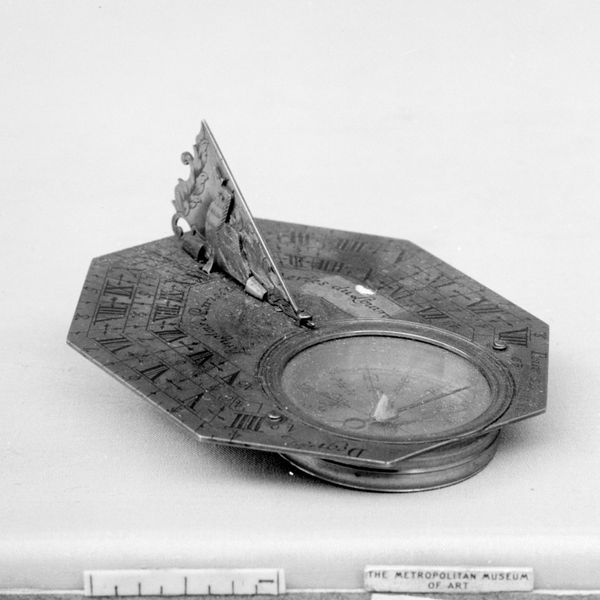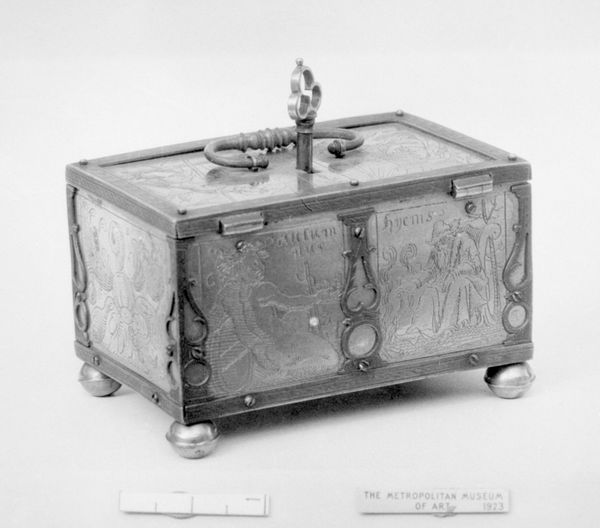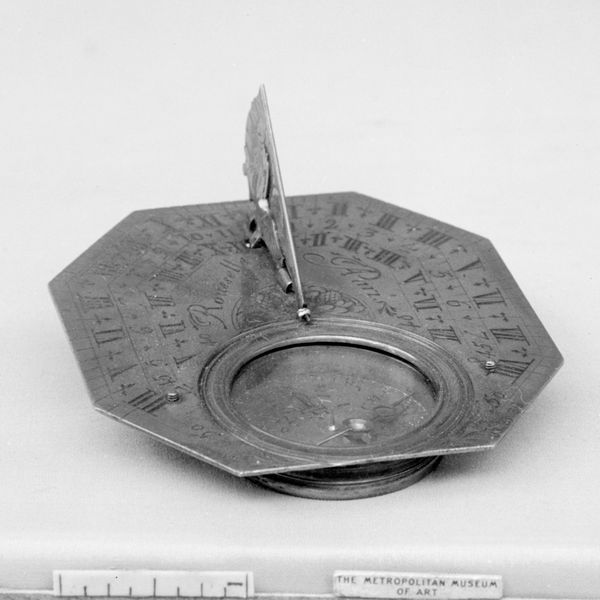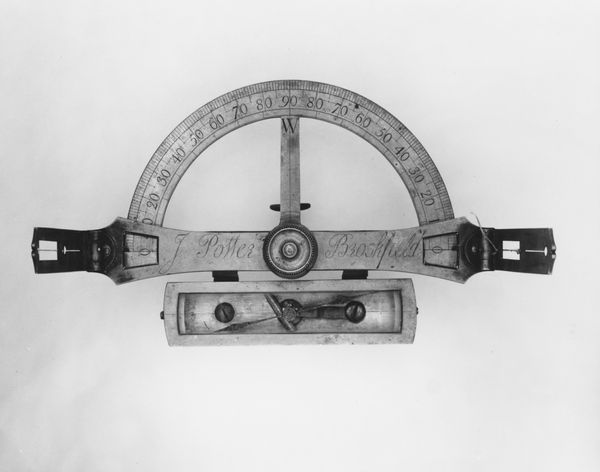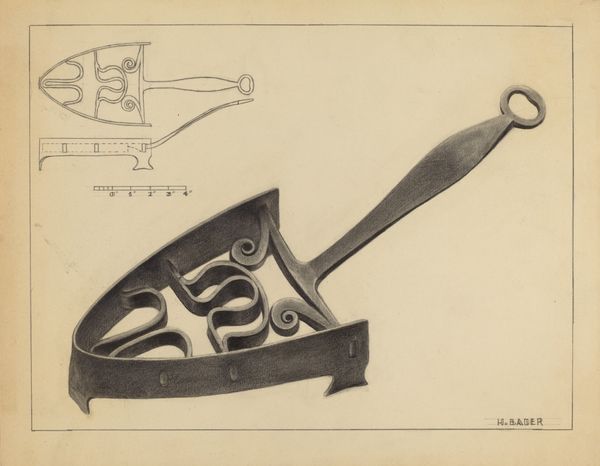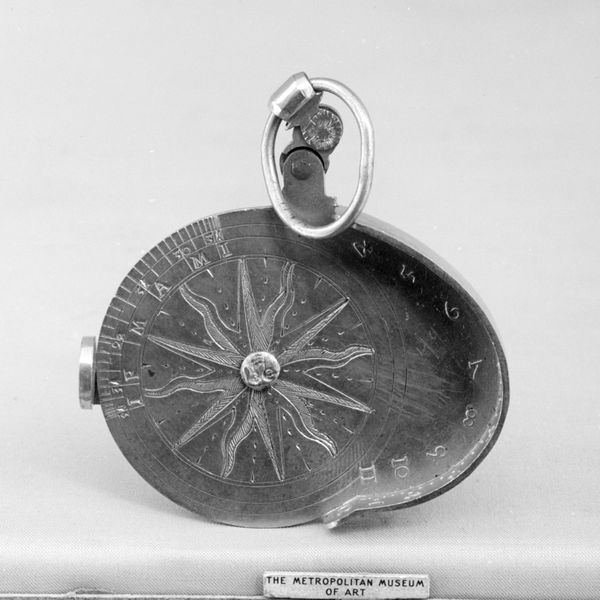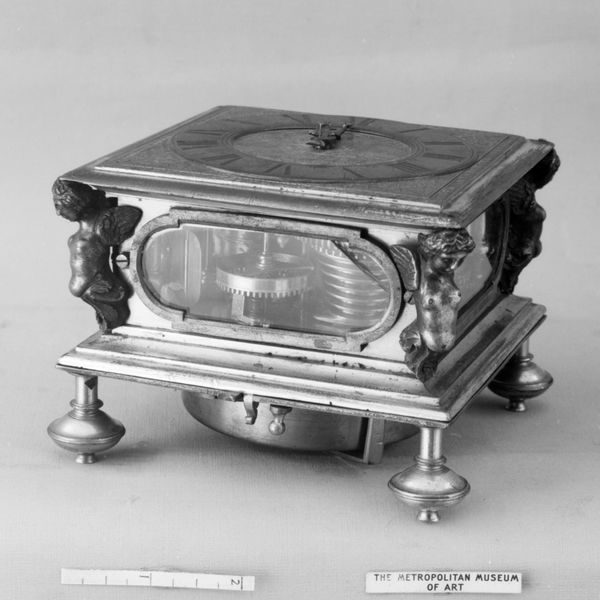
brass, metal, sculpture, engraving
#
precisionism
#
brass
#
metal
#
sculpture
#
geometric
#
sculpture
#
decorative-art
#
engraving
Dimensions: Overall: 2 3/4 × 5 1/8 × 5 1/8 in. (7 × 13 × 13 cm)
Copyright: Public Domain
Curator: What a beautiful, strange little universe contained in metal and glass. I’m instantly struck by the precision of it, and the artistry involved in rendering something so functional…so ornamental. Editor: Absolutely, I agree. What we're looking at is a Portable Equatorial Sundial, crafted between 1720 and 1730. The artist behind this intriguing piece is Ludewig, and the material? Primarily brass, with some engraving details, now residing at The Met. These objects remind us that science was also culture and worldview, and this precision went hand-in-hand with, shall we say, some less precise views of humanity. Curator: A worldview shrunk down to tabletop size! There’s such care taken to ensure its accuracy, to distill this enormous system—the earth and the sun, you know, all that grand stuff—into this neat little package that could probably fit into your pocket. Did our friend Ludewig intend for this to be actually used, or was it more symbolic, a showpiece, or perhaps a gift? Editor: Both, likely! Practical instruments like this also symbolized power, knowledge, global reach – and, crucially, ownership. Consider the political contexts: The Enlightenment and burgeoning colonialism were obsessed with cataloging and understanding the world…and claiming it as property, too. This wasn’t just innocent scientific inquiry. Curator: The shadows cast not only told time but also hinted at those wider truths, I suppose. There's also something magical in the fact that a contraption that predates electricity so elegantly performs calculations we struggle to replicate today in the form of wearable devices, with something much less aesthetically appealing. I suppose that our friend Ludewig did indeed try to reach a degree of objective "Truth," not unlike a digital machine that knows the date. Editor: I see this as less about “Truth” with a capital T, and more about solidifying power structures in a particular era, no matter how objective. Whether they still have those intentions or meanings today is in the eyes of the beholders, centuries later. It reminds me to tread carefully in my assessment and understanding of its importance. Curator: So perhaps a conversation piece, in all senses, then! It brings into question time and beauty and the complexity of understanding history. Well, now that is a bit too deep for me. Let's look at something less thorny now! Editor: I’m right there with you—time to shift gears and keep unpacking!
Comments
No comments
Be the first to comment and join the conversation on the ultimate creative platform.
